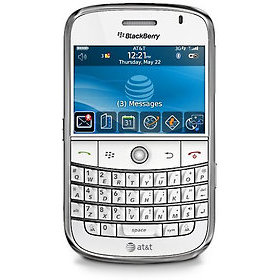SapientNitro’da Dijital Strateji’den sorumlu Başkan Yardımcısı Andrew Macey’ nin bu makalesini sevdim. Şu sıralar multi-channel firmalar ve “seamless customer experience” ile ilgili bir şeyler okumaya gayret ediyorum.
2010 Black Friday sales were up only 3% over last year, yet online sales are up 16% against last year.
And, 60-70 percent of offline, store and catalog sales are now impacted in some way
by digital commerce, either through comparative ratings and reviews, research, or targeted promotions
and personalized campaigns. Almost all retailers are making significant investments, ranging in scale
from about 1-3 percent of revenue, in cross-channel capabilities including online, mobile and social
media to build brand and drive new revenue streams.
Despite all this momentum and spend, however, few companies have managed to successfully bring
together the thinking, skills, and experience required to create a unified, successful cross-channel
organization. What’s required for a company to build a successful cross-channel organization? How
does one ensure maximum return on all those investment dollars?
1. Change your mindset
The first and most important step is to think of cross-channel as a combination of touch-points that
together must create a seamless customer experience, and an organization has to accommodate that
change in thinking. It doesn’t matter whether your customer is buying online to pick up in the store,
returning online purchases to the store, doing comparative price checks on a phone while in the store,
or using mobile coupons in the store — marketing and merchandising have to be able to work together
to create that seamless customer experience. A helpful tool to use is a day-in-the-life map of what your
customer actually does and wants to be able to do as he or she moves from online to store to catalog
and back again. Design a set of experiences around those day-in-the-life scenarios.
2. Evolution, not revolution
Recognize that any organization has to evolve over time. It’s not reasonable to believe that all best
practices and new ideas can be adopted from day one. Aspects of the organization should be evaluated,
designed, and built with respect to incentives and rewards, people and culture, business processes, technology,
and internal structure as companies develop a more sophisticated set of capabilities.
3. Evaluate internal capabilities with an unbiased eye
Figure out where the current organization lies within the maturity model by assessing its capabilities
in each functional area, including marketing, merchandising, Web commerce, fulfillment, customer
service, international expansion, and IT. Consider the ability to design and execute things like targeted
campaigns, seamless cross-channel support, dynamic and consistent pricing, or cross-channel
analytics. Evaluate against several criteria including depth of skills relative to the future vision,
readiness and ability to change, and expected impact and size of impending change.
4. Look outside for comparative models
There is no one best model for cross-channel organizations, despite the intuitive appeal such an idea
offers, but there are a small and finite number of viable options that can be adapted, and the core
element of best thinking revolves around developing a cross-channel or digital Center of Excellence
(COE) that serves as the building block for future capabilities for domestic and international needs.
The first model is a COE or digital operations hub with strategy, Web site, mobile, and capital spending
responsibility, but no direct P&L (profit and loss statement). IT, such as it relates to digital, online,
and call center operations, is part of this organization, and the organization serves its business line
P&L counterparts through named liaisons that help prioritize capital spending and investment across
the company as a whole. In this model, there is a great ability to try new ideas, experiment, and learn
without disruption to the traditional, P&L-based business lines.
The second model is a digital operation COE that has its own P&L for direct sales. A Web site, call
center, and fulfillment for any digitally-enabled orders run through this organization. This simplifies
investments, since there is no longer competition between channels, but the change is large and it’s a
big strategic shift to execute in this model.
Finally, the most sophisticated version of the cross-channel organization is where digital is embedded
within each business line, and it is no longer a separate organization. This is the most evolved and
advanced organization, and the hardest to achieve without a lot of duplicated cost in various brands
or business lines.
5. There is no one-size-fits-all best practice answer
It may sound obvious, but it’s worth reiterating that there is no one-size-fits-all best practice. The challenge
is to decide what functional aspects of a digital or cross-channel organization should constitute the COE
for a given company. A good way to think through how to build the COE is often to distinguish between
things like transactional commerce capabilities versus creation, development, editing, and publishing of
content. Content generally should be locally produced (or outsourced), but in accordance with standardized
workflows, methods, and tools that govern how content will be published, maintained, and reused across
channels. It also assumes a content management system to enable reuse.
6. Centralize or decentralize?
The benefits of centralizing a lot of business functions include generally lower total cost, more control,
and clear standards. Potential negatives are that a COE runs the risk of being further removed from the
customers than are the P&L business lines, and the fact that response to the market could be slower than
if driven within P&L-based business lines. On the other side of the coin, decentralizing digital functions can
create a quick response to market needs, but with a loss of central control, consistency, and standards and a
likely increase in duplication and higher total cost to the company. For all these reasons, a balanced approach
to a COE that evolves over time is usually most appropriate for customers, employees, and company needs.
7. Include IT as a part of the cross-channel organization plan
IT cannot remain an island, and it has to be a big part of the success of any future digital or cross-channel
COE. Application development, testing, QA, and maintenance and support each need to be considered as they
relate to new capabilities. Outsourcing can also work in the new model, as it is unlikely that an organization
would have all its needed skills in-house from day one, and investing to bring on the right talent takes
time, money, and effort. Focus on building only the most strategic capabilities in-house, like enterprise
architecture or selected application development, while relying on outsourcing either for forward thinking,
strategic perspective, and specific expertise, or for more commoditized IT needs.
In conclusion, there is no better time for any company to be moving toward a new set of digital and crosschannel
capabilities. Momentum is strong, future growth in digital is all but certain to continue, and
consumers will continue to expect more seamless interactions that build brand experiences, boost loyalty
and retention, and bring in new customers — but planning, creating and evolving the digital organization to
make use of any investments in social, mobile, or cross-channel commerce is the hard part, and without the
right organization, it’s impossible to win.
ideaengineers.sapient.com
Andrew Macey is Vice President, Digital Strategy at SapientNitro,
where he is primarily focused on helping companies think through the
challenges and benefits of future business models, organizational
capabilities, and new ways to create meaningful and rewarding
experiences across channels for business and consumer customers.
[email protected] or visit www.sapientnitro.com













